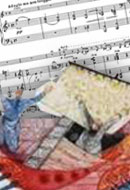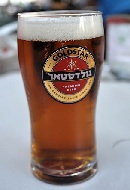Fast Days
 Whose Holocaust?
Whose Holocaust?Friday, January 27, 2012 by Margot Lurie | Jewish Ideas Daily » Daily Features
For much of Europe, today is the UN-designated International Holocaust Remembrance Day. Secretary-General Ban Ki-moon has dedicated his address this year to children murdered by the Nazis, with the message that "the best tribute to the memory of these children is an ongoing effort to teach the universal lessons of the Holocaust, so that no such horror is visited upon future generations."
 Jonah and the Music of Yom Kippur
Jonah and the Music of Yom KippurThursday, October 6, 2011 by Michael Carasik | Jewish Ideas Daily » Daily Features
Leviticus 10 tells us that Aaron's sons Nadav and Avihu died for bringing "strange fire" before the Lord in the wilderness. As a result of their deaths, according to Leviticus 16, God instructed Moses to ordain an annual Day of Atonement.
 Mourning, Memory, and Art
Mourning, Memory, and ArtMonday, August 8, 2011 by Richard McBee | Jewish Ideas Daily » Daily Features
David Roberts (1796–1864) was a Scottish painter who in the late 1830's traveled extensively in the Levant and Egypt documenting "Orientalist" sites in drawings and watercolors. Among Roberts's paintings was a massive 1849 work, The Destruction of Jerusalem.
 A Two-Day Weekend in Israel?
A Two-Day Weekend in Israel?Friday, July 8, 2011 by Elliot Jager | Jewish Ideas Daily » Daily Features
With July 4th behind them, Americans can look forward to closing out the summer season with Labor Day on September 5th. All told, they will enjoy ten national holidays. And, of course, they have the leisure of weekends.
 Purim Puzzles
Purim PuzzlesFriday, March 11, 2011 by Lawrence Grossman | Jewish Ideas Daily » Daily Features
Purim, Judaism's strangest holiday (which this year falls on March 20), is prescribed by what may be the strangest book in the Hebrew Bible, the scroll (m'gilah) of Esther. Two public readings of the book, one at night and the other in the morning, tell a story of Persian palace intrigue in the fifth century B.C.E., a recitation accompanied by the holiday's decidedly unspiritual noisemaking, tippling, and masquerade.
 Jonah and Yom Kippur
Jonah and Yom KippurWednesday, September 15, 2010 by Meir Soloveichik | Jewish Ideas Daily » Daily Features
Read in its entirety in the synagogue in the afternoon of Yom Kippur, Jonah is the only multi-chapter book of the Bible to be so honored. Indeed, one commentator, observing that the brief Torah reading that precedes Jonah has little to do with the day, but merely continues where the morning reading left off, has suggested that this may be precisely in order to emphasize that, in a departure from the usual priorities, the haftarah, or prophetic portion, is in fact the critical text for the occasion. But what makes it so significant, and what lesson does it really teach about Yom Kippur?
Editors' Picks
Why Are We Fasting? Chaim Lindenblatt, Torah Musings. Megillat Ta'anit, the Scroll of Fasting, prohibits fasting the day before Purim. So, why do we observe the Fast of Esther?
Why Are We Still Fasting? Daniel Pinner, Arutz Sheva. Both Purim and Pesach celebrate the deliverance of the Jewish people. But the fast preceding each festival reminds us that "to achieve redemption, we first have to go through a measure of suffering."
Agunot Jewish Ideas Daily. Ta'anit Esther, the traditional fast day preceding Purim, is observed today. In recent years it has been designated as an international day of study, reflection, and calls to action on behalf of agunot, literally "anchored" or "bound" women.
Yom Kippur at Sea Sam Kestenbaum, New York Times. A young Maine lobsterman takes time off on Yom Kippur to mend spiritual knots and refuel for the coming year. (2010)
Why Fast? Elli Fischer, Adderabbi. Expiation, corrective, a reflection of mood, or sensitization to the plight of the needy? Only one of these reasons has biblical support.
Paradise Regained William Kolbrener, Aish.com. A literary encounter with Paradise Lost helped one graduate student access the poetry inherent in the Jewish idea of repentance.
The Fast of Fasts Philologos, Forward. In rabbinic times, when a Jew spoke of "the fast," there was no need to be more specific—as even a passage in the New Testament interestingly attests.
It's a Bird! It's a Challah! Leah Koenig, Forward. Rolls shaped like birds, symbols of divine protection and mercy, are among traditional Ashkenazi foods for Rosh Hashanah and the meal before Yom Kippur.
On the Ninth of Av Frank Talmage, Commentary. In Catalonia, Spain, once the scene of centuries of Jewish hopes and achievement, a student of Jewish history is beset by a torrent of emotions.
“Friendship Jew” Jenna Weissman Joselit, New Republic. On the perils of cross-cultural exchange as experienced by a Jewish Peace Corps volunteer in Guiyang, China.

